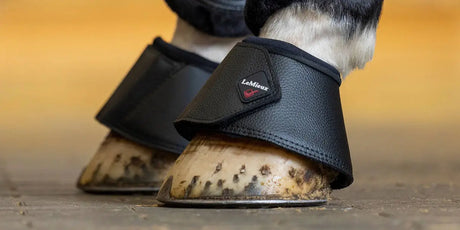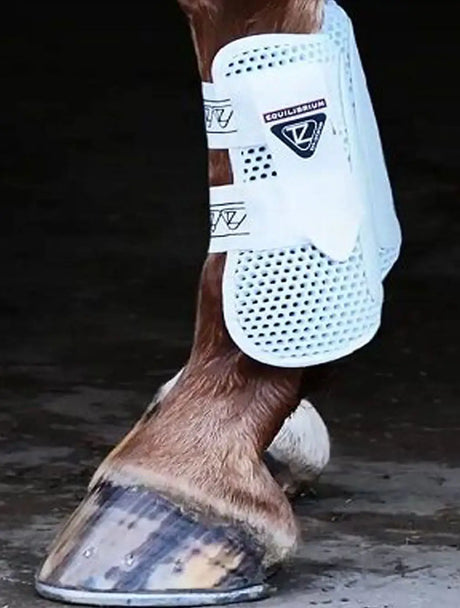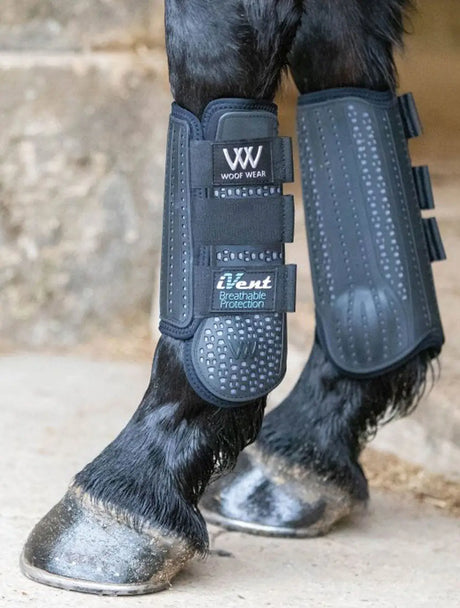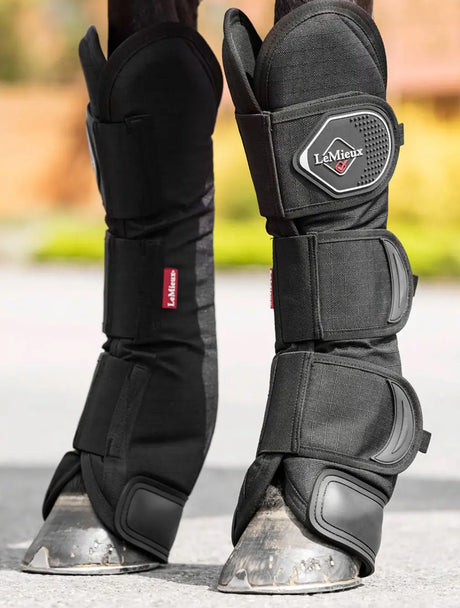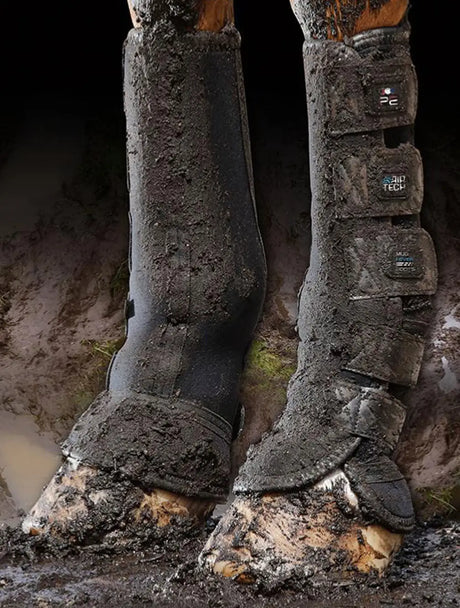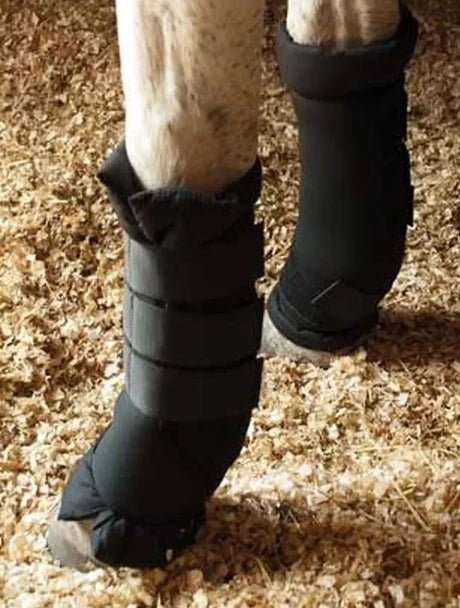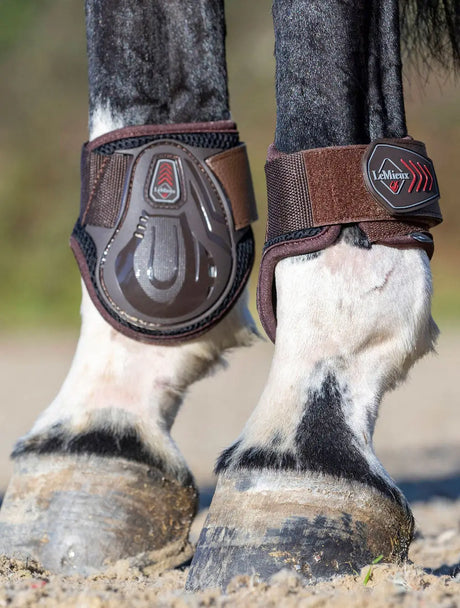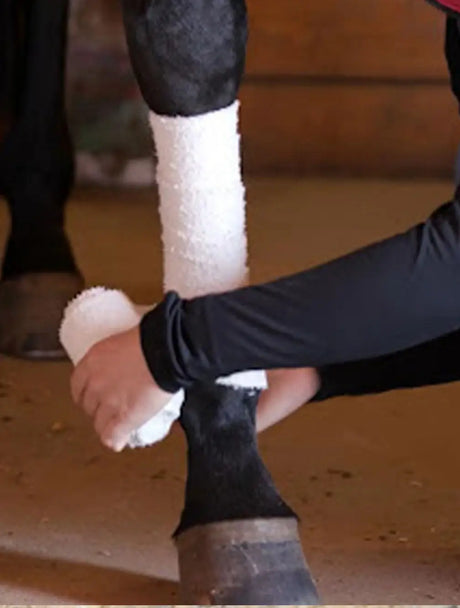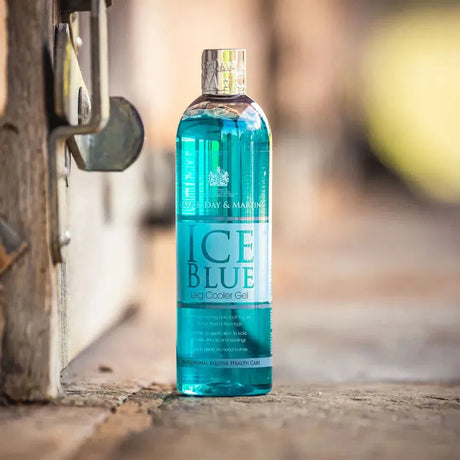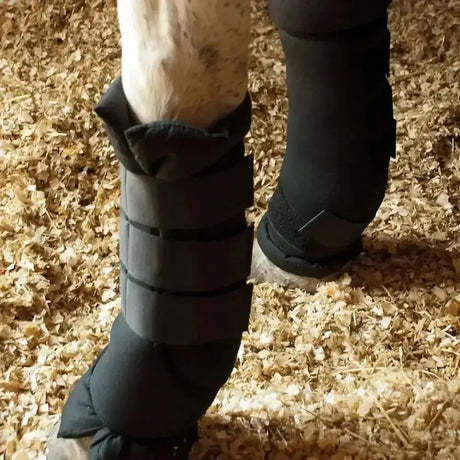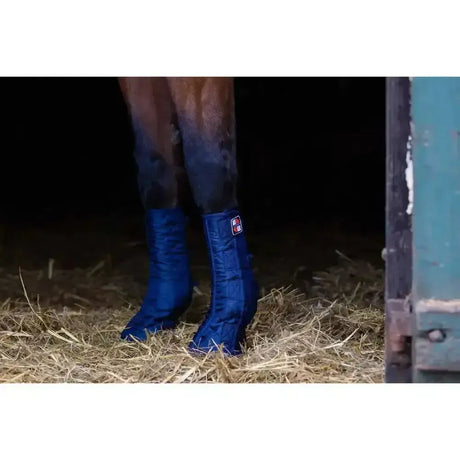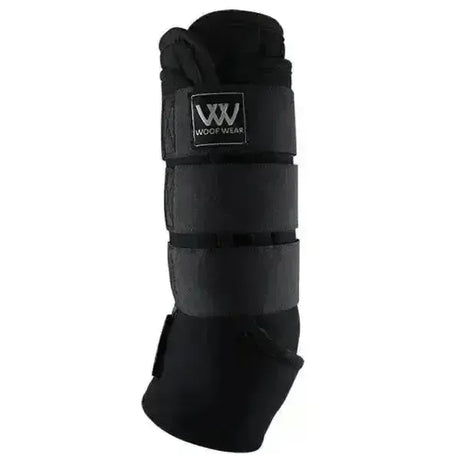Stable Boots
Order Before 2pm For FAST NEXT DAY Delivery Service
Keeping your horses legs supported during stabling, we have a range of Bandages, Pads and Velcro Horse Boots
- Featured
- Best selling
- Alphabetically, A-Z
- Alphabetically, Z-A
- Price, low to high
- Price, high to low
- Date, old to new
- Date, new to old
FiltersFilter & Sort
-
Hy Equestrian Stable Protection Boot
£42.50£49.99Save OnlineUnit price /Unavailable -
Rhinegold Stable Medicine Boots
£31.45£33.50Save OnlineUnit price /Unavailable -
£66.45
£69.95Save OnlineUnit price /Unavailable -
Equilibrium Equi-Chaps Stable Chaps
£33.05£34.99Save OnlineUnit price /Unavailable -
£40.97
£44.99Save OnlineUnit price /Unavailable
Horse Boots For Specific Jobs
- Shop The Full Range-
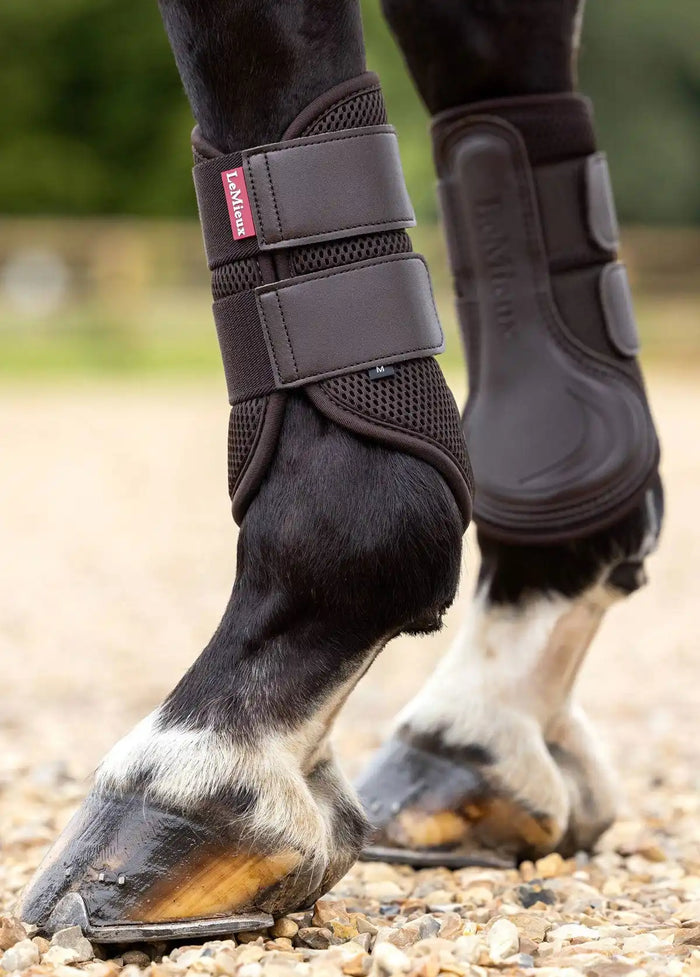
-
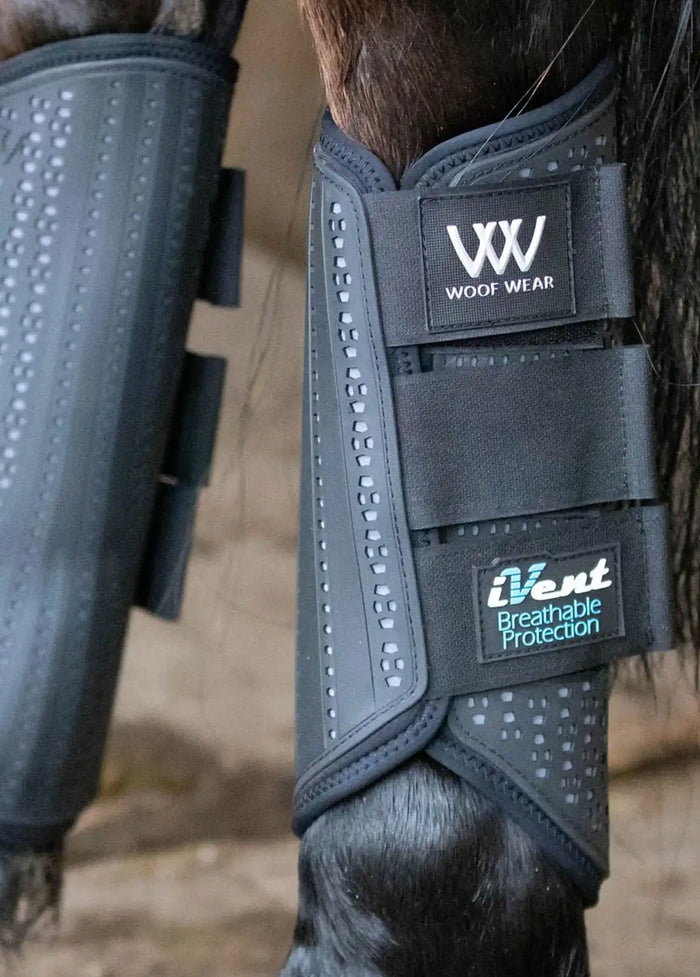
Eventing & Showjumping Boots
Horse boots specifically designed for jumping, offering protection to the back of the from legs and the insides of hind legs
-
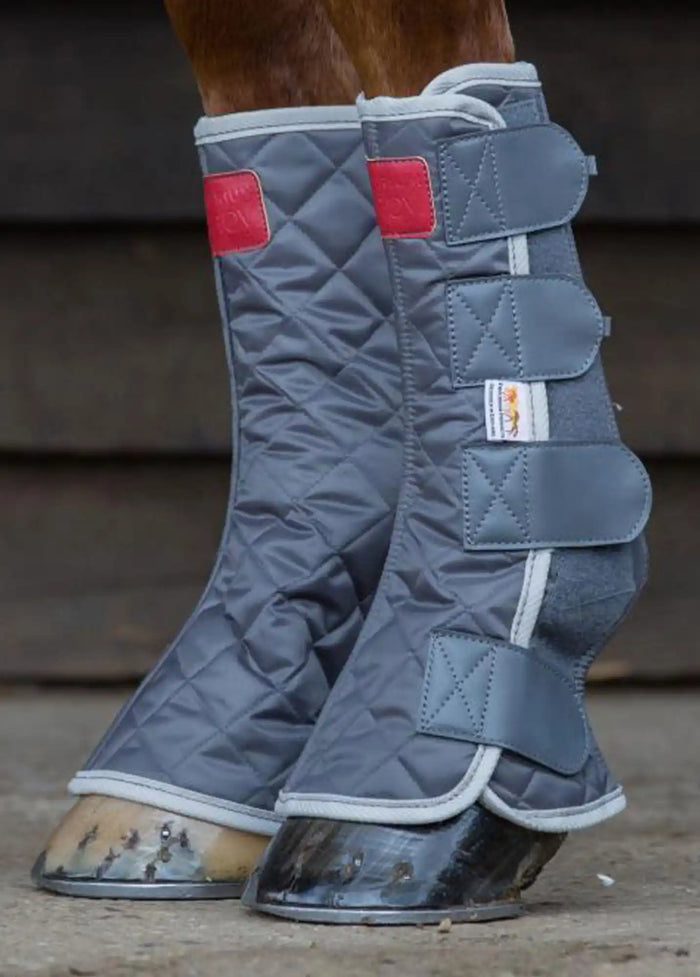
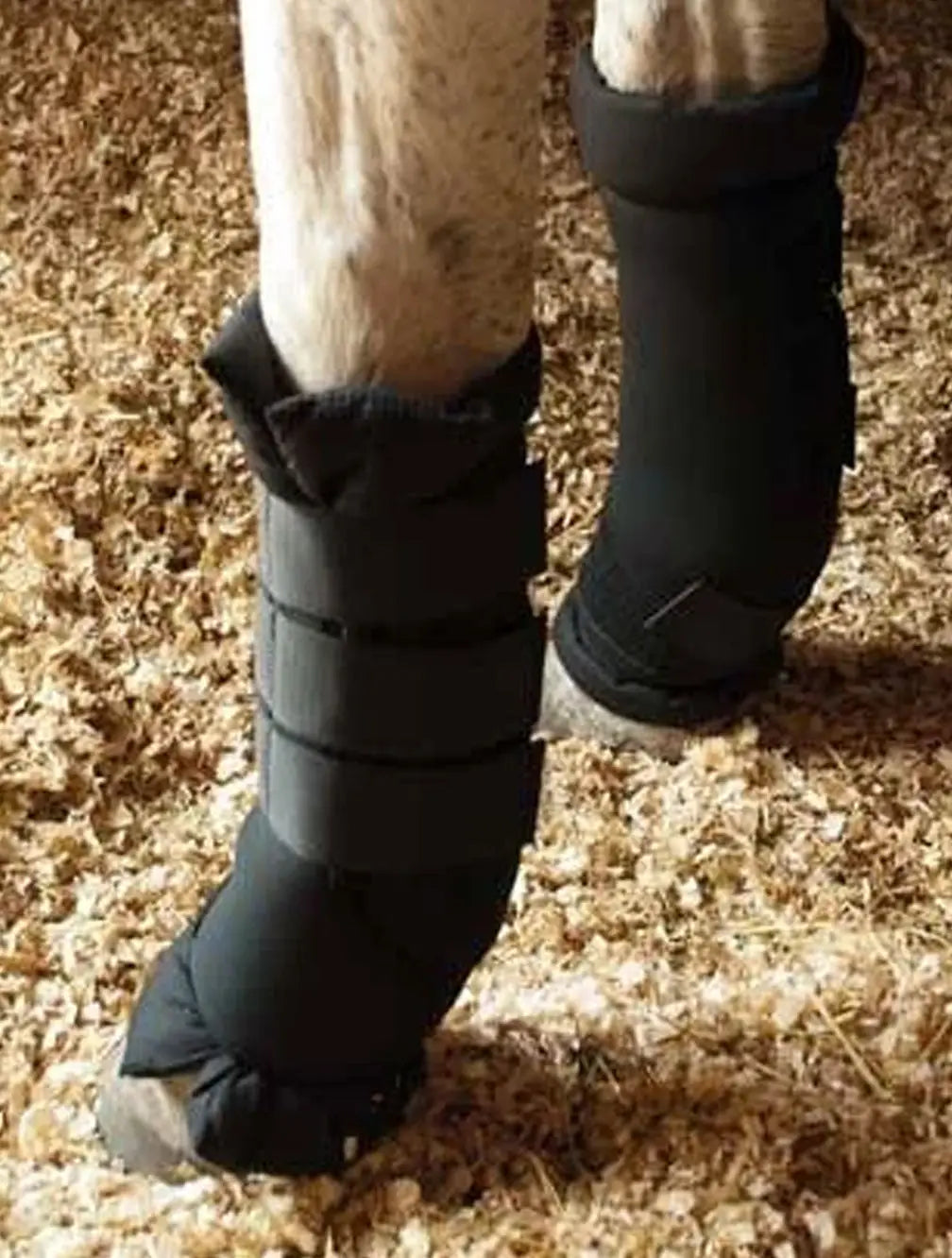
Stable Boots
Stable boots are protective and supportive boots used on horses while they are resting in the stable. Unlike other types of boots designed for active use, stable boots are primarily used to provide warmth, support, and protection during periods of rest or rehabilitation. They are especially helpful for horses that are stabled for long periods, as they aid circulation, reduce swelling (stocking up), and protect the legs from minor injuries like knocks or scrapes.
Key Features of Stable Boots:
- Supportive Padding: Stable boots are heavily padded with materials like foam or fleece to support the tendons and ligaments during rest. This helps prevent stiffness or swelling in the legs.
- Breathability: Many stable boots are designed with breathable fabrics to allow airflow and prevent overheating or moisture buildup around the legs.
- Adjustable Fit: The boots often come with Velcro straps or elasticated bands, allowing for easy adjustment and a snug, comfortable fit.
- Full Leg Coverage: They generally cover the entire lower leg from the hoof up to the knee or hock, offering comprehensive protection.
- Removable Liners: Some stable boots come with removable liners, such as quilted cotton or fleece, for easier cleaning and for adjusting the level of warmth or compression.
Benefits of Stable Boots:
- Prevent Swelling (Stocking Up): Horses that stand still in a stable for extended periods are prone to fluid buildup (swelling) in their legs. Stable boots help promote circulation and prevent this from happening.
- Support Recovery: Stable boots are often used on horses recovering from injury or after strenuous exercise to provide light support and help with recovery.
- Warmth and Comfort: They keep the horse’s legs warm and protected during cooler weather, which can be beneficial for older horses or those with joint stiffness.
- Protection from Stable Injuries: The padded design protects against minor knocks or scrapes that might occur when a horse moves around in its stall.
When to Use Stable Boots:
- Post-Exercise Recovery: After intense exercise or competition, stable boots help reduce inflammation and promote recovery by providing light compression.
- During Rest or Stabling: For horses that spend long hours in the stable, especially those prone to stocking up, stable boots help prevent swelling and keep the legs supported.
- Rehabilitation: For horses recovering from leg injuries or surgery, stable boots can offer light protection and compression during rest.
- Cold Weather: Stable boots can be used in colder climates to keep the legs warm and prevent stiffness in the joints or tendons.
Types of Stable Boots:
- Standard Stable Boots: These provide general support and are typically used for preventing swelling or providing warmth during periods of rest.
- Magnetic Therapy Boots: Some stable boots incorporate magnets into their design, aimed at promoting circulation and reducing inflammation as part of therapeutic treatment.
- Ice Therapy Boots: Some models are designed for use with ice packs to provide cooling therapy after intense exercise or injury, reducing inflammation and aiding in recovery.
- Compression Boots: These boots provide gentle, continuous compression, which can help improve circulation, reduce swelling, and speed up recovery.
Choosing the Right Stable Boots:
- Material: Choose breathable, moisture-wicking materials like fleece or quilted cotton to ensure comfort. In warmer climates, opt for lighter fabrics to prevent overheating.
- Fit: The boots should fit snugly without being too tight, offering support without restricting blood flow. They should cover the fetlock and cannon bone areas to prevent swelling.
- Padding: For horses with a tendency to stock up or recover from injuries, look for boots with extra padding or compression.
- Ease of Use: Velcro or easy-fastening straps are ideal for quick application and removal.
- Washable Liners: Removable or washable liners make it easier to keep the boots clean, especially if used regularly.
Popular Brands for Stable Boots:
- LeMieux: Known for high-quality, well-padded stable boots that offer excellent support and breathability.
- WeatherBeeta: Offers durable and affordable stable boots with quilted liners for warmth and support.
- Premier Equine: Produces advanced stable boots with removable liners and therapeutic properties.
- Veredus: Known for their magnetic stable boots, which are designed to
promote circulation and aid recovery through magnetic therapy.
How to Use Stable Boots Effectively:
- Correct Application: Ensure the boots are applied securely but not too tightly to avoid restricting circulation. The Velcro straps should be evenly adjusted for a snug fit.
- Regular Monitoring: If your horse is wearing stable boots for extended periods, regularly check for signs of pressure points, rubbing, or swelling.
- Daily Removal: It’s essential to remove the boots daily to allow the legs to breathe and inspect for any issues, especially if they are being worn long-term.
- Cleaning and Maintenance: Regularly clean the boots to prevent dirt buildup and keep them hygienic, especially the liners, which can trap moisture and dirt.
Pros of Stable Boots:
- Helps prevent leg swelling or "stocking up" in the stable.
- Provides support and warmth, especially in colder weather.
- Aids in post-exercise recovery or rehabilitation.
- Easy to apply and adjust, even for long-term use.
Cons of Stable Boots:
- They can sometimes trap heat if not made from breathable materials.
- If used for too long or incorrectly, they may cause rubbing or pressure sores.
- Require regular cleaning and maintenance, especially in muddy or damp conditions.
Stable boots are a great option for keeping your horse’s legs healthy and supported while in the stable. Whether your horse is recovering from an injury, prone to swelling, or simply needs extra comfort during rest, stable boots can be an effective tool. Would you like recommendations for specific boots or advice on how to use them for a particular situation?

